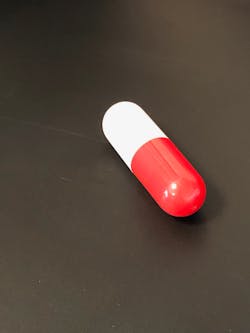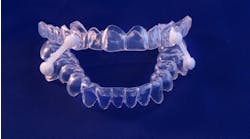No evidence to support the use of antibiotic prophylaxis for patients with breast implants
THERE HAS BEEN A RECENT TREND of plastic surgeons recommending antibiotic prophylaxis (AP) to patients with breast implants prior to dental treatment. There are even published papers in the plastic surgery literature recommending that “dental or surgical procedures, especially when performed under septic conditions, should be accompanied with antibiotic prophylaxis if possible.” (1)
Unfortunately, these recommendations are not supported by scientific studies; rather, they are based on anecdotal and empirical evidence of a theoretical risk. As with most surgeries, the majority of infections that occur are related to the surgery itself. Late infections are often attributed to hematogenous spread of bacteria from remote sources. But frequently, and without strong evidence, plastic surgeons believe dental procedures may play an important role.
The literature is clear that chronic oral bacteremia from normal daily activities—such as chewing, brushing, and flossing—pose a far greater potential risk than those from isolated dental treatment. These chronic bacteremias amount to an average of 90 hours per month versus six to 30 minutes per dental procedure. Additionally, taking antibiotics prior to dental procedures does not prevent distant-site infections for the vast majority of patients. They simply reduce the number of bacteria in the bloodstream. (2)
The most recent American Heart Association (AHA) guidelines for cardiac patients (2007) limits antibiotic prophylaxis only to patients in the highest risk category. (2) The latest guidelines from the American Dental Association (3) and the American Academy of Orthopaedic Surgeons (4) (from 2015 and 2017, respectively) recommend against routine antibiotic prophylaxis for patients with orthopedic joint implants. Infectious disease experts also state that “patients with existing (breast) implants do not need antibiotic prophylaxis when undergoing invasive dental procedures.” (5)
As with all treatments, the risk must be weighed against the benefit. Many patients and health-care providers assume a single dose of antibiotics has minimal risk. However, up to 15% of community Clostridium difficile infections are related to dental antibiotic prescriptions. Additionally, a study in the UK showed that a single dose of clindamycin for AP causes 13 deaths per million people, all related to C. diff infection. (6)
There are no studies that show any association with oral bacteria and late breast implant infection. There are no studies that show hematogenous seeding of breast implants leading to infection or capsular contracture from bacteremia related to dental treatment. There is, however, evidence that AP does not prevent distant-site infections. (7) So, the potential theoretical benefit of AP does not outweigh the known risks of antibiotic use. These include C. diff infections, allergy, drug interactions, and antibiotic resistance.
What should dentists do?
If a plastic surgeon recommends antibiotic prophylaxis for their patients with breast implants prior to dental work, dentists should take these steps:
• First, educate the patient about the lack of scientific evidence to support the use of AP.
• Then, explain the risks of taking even a single dose of antibiotics.
• If the surgeon recommends AP and the patient prefers to use AP, simply request that the surgeon write the prescription.
• If you write the prescription on the recommendation of the surgeon, you are liable for any adverse outcomes related to the antibiotic use.
• It is incumbent on dentists to make decisions based on the evidence related to AP and not simply follow what is recommended by another physician.
References
1. Pittet B, Montandon D, Pittet D. Infection in breast implants. Lancet Infect Dis. 2005;5(2):94-106.
2. Wilson W, Taubert KA, Gewitz M, et al. Prevention of infective endocarditis: guidelines from the American Heart Association: a guideline from the American Heart Association Rheumatic Fever, Endocarditis, and Kawasaki Disease Committee, Council on Cardiovascular Disease in the Young, and the Council on Clinical Cardiology, Council on Cardiovascular Surgery and Anesthesia, and the Quality of Care and Outcomes Research Interdisciplinary Working Group. Circulation. 2007;116(15):1736-1754. doi:10.1161/CIRCULATIONAHA.106.183095.
3. Sollecito TP, Abt E, Lockhart PB, et al. The use of prophylactic antibiotics prior to dental procedures in patients with prosthetic joints: evidence-based clinical practice guideline for dental practitioners-a report of the American Dental Association Council of Scientific Affairs. J Am Dent Assoc. 2015;146(1):11-16.e8. doi:10.1016/j.adaj.2014.11.012.
4. Appropriate use criteria. American Academy of Orthopaedic Surgeons website. www.orthoguidelines.org/go/auc.
5. Lalani T. Breast implant infections: an update. Infect Dis Clin North Am. 2018;32(4):877-884. doi:10.1016/j.idc.2018.06.007.
6. Thornhill MH, Dayer MJ, Prendergast B, Baddour LM, Jones S, Lockhart PB. Incidence and nature of adverse reactions to antibiotics used as endocarditis prophylaxis. J Antimicrob Chemother. 2015;70(8):2382-2388. doi:10.1093/jac/dkv115.
7. Lockhart PB, Loven B, Brennan MT, Fox PC. The evidence base for the efficacy of antibiotic prophylaxis in dental practice. J Am Dent Assoc. 2007;138(4):458-474.
Editor’s note: This article originally appeared in Perio-Implant Advisory, a chairside resource for dentists and dental hygienists for issues relating to periodontal and implant medicine. Exclusive content from an academic perspective centers on complex care, solving clinical complications from a team-based approach through interdisciplinary management.









